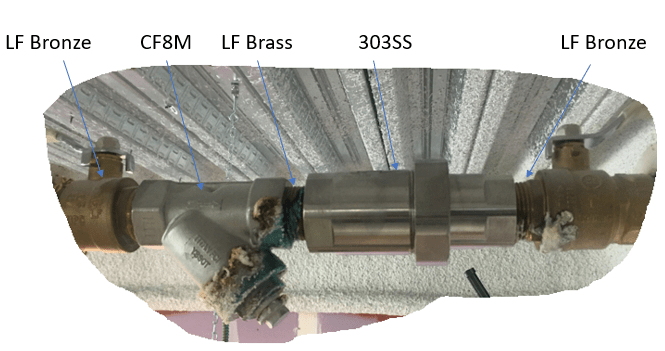TBE is on point.
You have two options, go all brass, or go all bronze.
From the amount of scale this isn't very pure water.
This means that you will have fairly high electrical conductivity, which will along with the higher temp accelerate galvanic corrosion.
I would also guess that the threads on the SS fittings will show some crevice corrosion.
Especially since neither of these SS parts is very corrosion resistant.
I would also expect to find some Cu deposited on steel or SS components further downstream in the system.
When brass de-zincifies you actually dissolve some of the material besides just the Zn and the Cu then re-deposits locally, but some will be transported.
= = = = = = = = = = = = = = = = = = = =
P.E. Metallurgy, consulting work welcomed


